 Java
Java
 javaTutorial
javaTutorial
 Detailed explanation of WeChat public account payment development (java) examples
Detailed explanation of WeChat public account payment development (java) examples
Detailed explanation of WeChat public account payment development (java) examples
In the past, payment in the company's project development was done using Alibaba's payment, which was called simple and casual; sadly, now the company has developed a WeChat official account, so I stepped into the WeChat payment development that is full of pitfalls. . .
Business process:
This WeChat official website explains it in great detail (portal:).
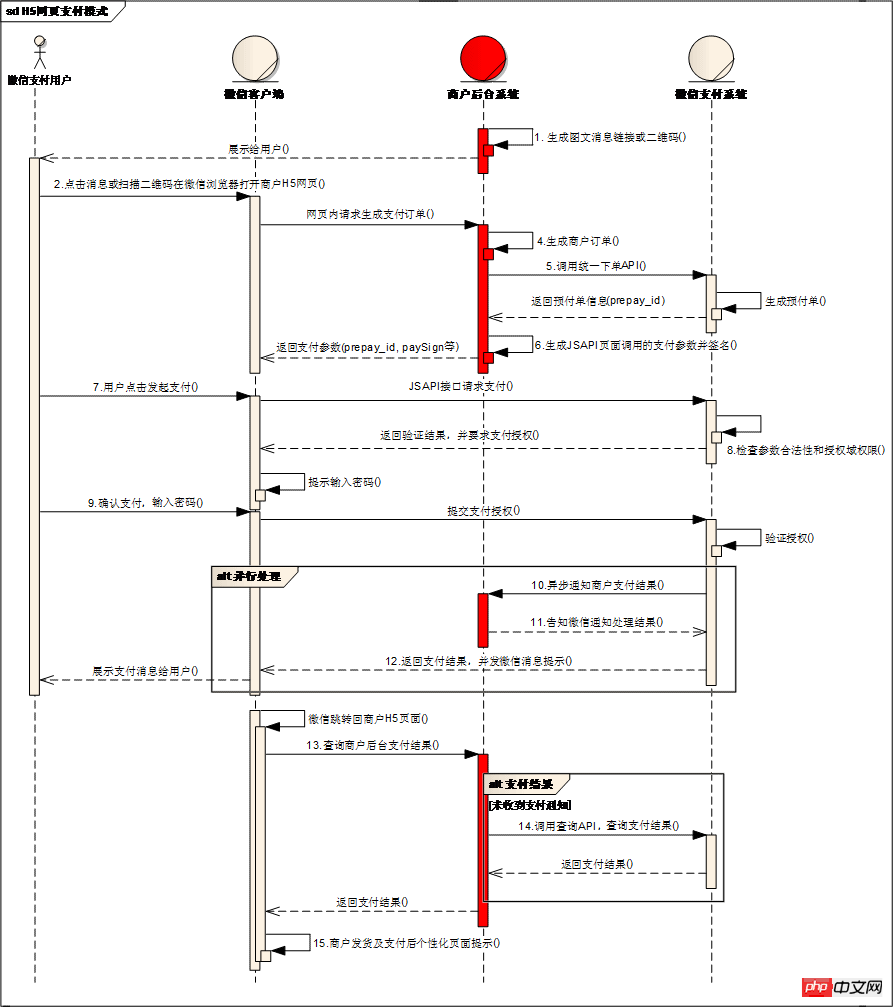
The general process is: the user clicks a payment button-->Backend processing (actually, it encapsulates the necessary data for payment and obtains prepay_id, and then combines it with Some necessary parameters are encapsulated and passed to the front desk)-->The front desk receives the data and calls WeChat's js to process the data and call payment-->The user sees an interface for entering a password, including the amount and other information--> After the user enters the password, a successful payment page will appear. At the same time, WeChat will call back our interface to notify us of the payment result (this part of the process is completed by WeChat itself, we don’t need to worry about it) --> Return to the system itself page.
Development Steps:
1. Set up the payment directory
This official document is very disgusting. I was confused and a little dizzy after reading it. Although I can’t understand it, I think it looks awesome! Portal:
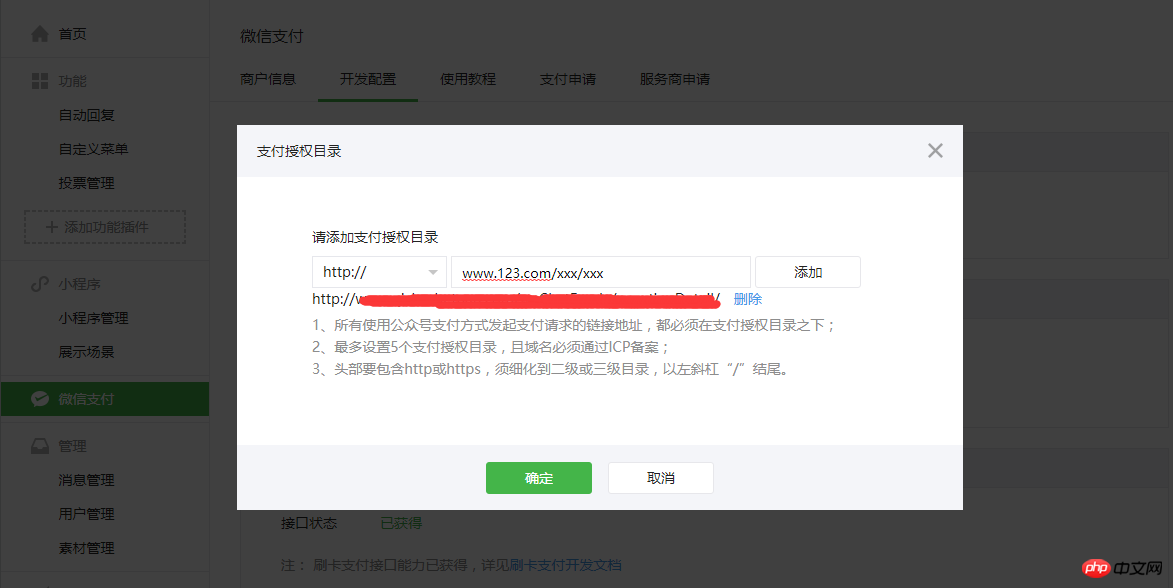
2. Set the authorized domain name

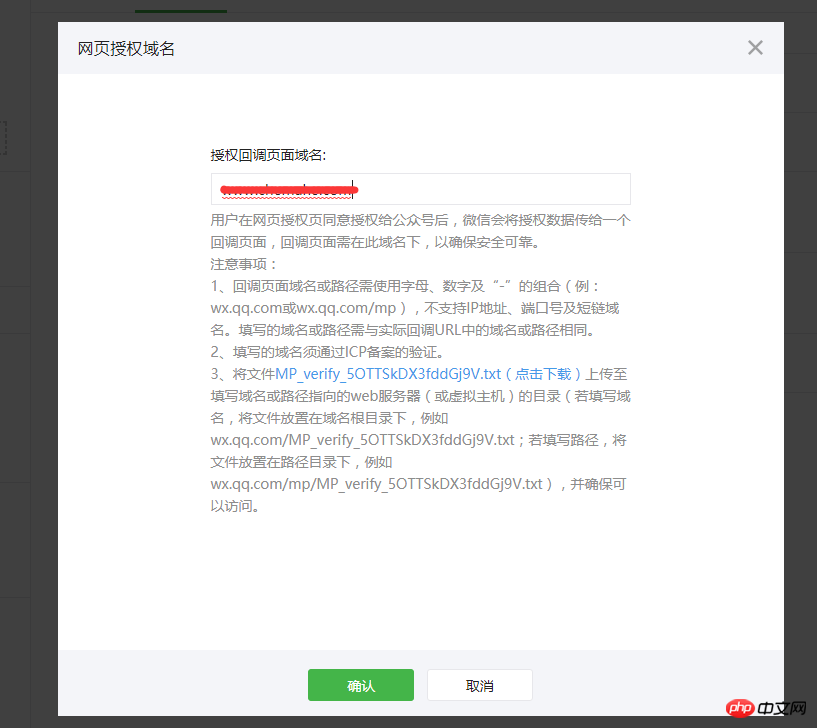
These 2 steps Once you're done, you can take a break because the big pit is coming. . .
3. The merchant server calls the unified ordering interface to request an order
What does this do? When I first started doing it, I was confused, but who calls the WeChat payment team nb? How can they show their sophistication without adding some things that you don’t understand? . . If you don’t understand, just follow the document.
Portal:, WeChat official gave a detailed explanation of the parameters. After looking at it for a long time, I summarized it by encapsulating some necessary parameters and then accessing this interface to obtain data. The following are several commonly used parameters. Directly copy other people’s introduction in detail:
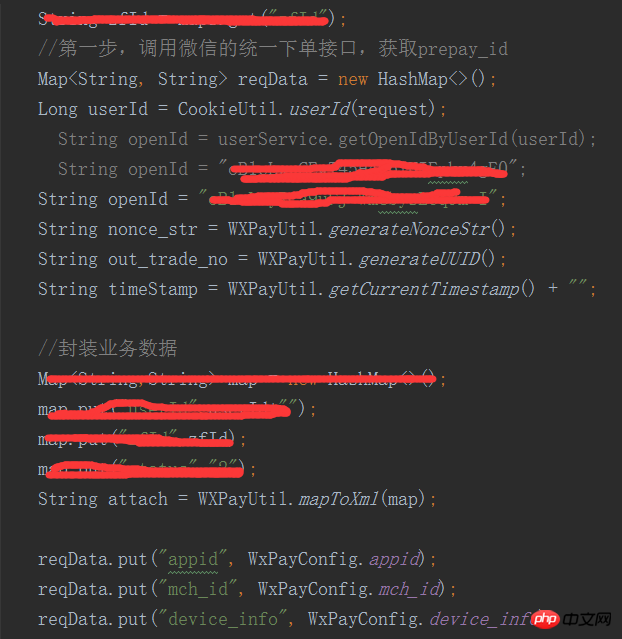
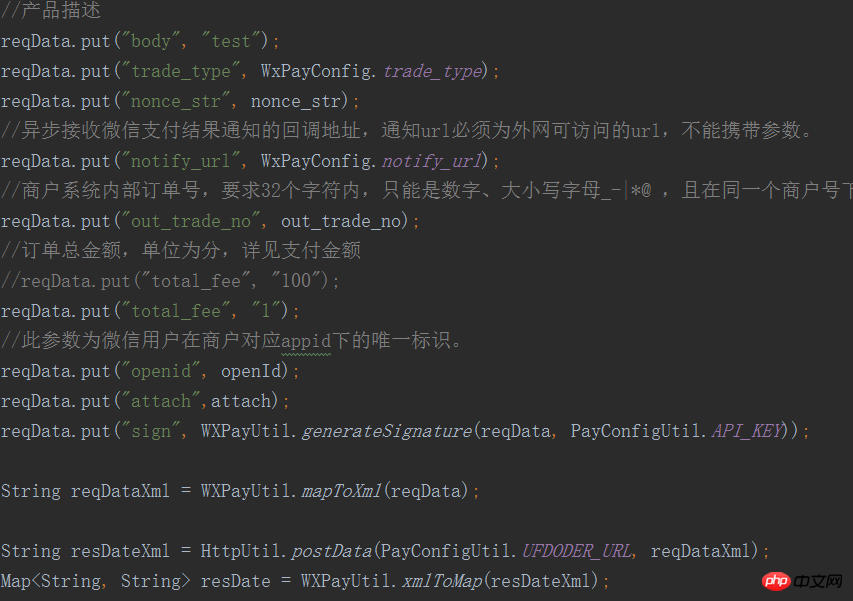

Problem summary (problems I encountered during this process): 1 (Important) appid and openid must match, in other words, the user's openid must be under the current official account Users (we have several public accounts, you may not encounter this problem, but it is very important, let me talk about it first) 2
<span style="text-decoration: underline; color: #ff0000">第二步,生成签名并返回到前台</span><span style="color: #ff0000">这个过程中一定要注意参数一定要写对了,大小写,是否有空格,我在这上面掉了一个大坑,界面调用支付时一直闪退,注意.<br><br></span>



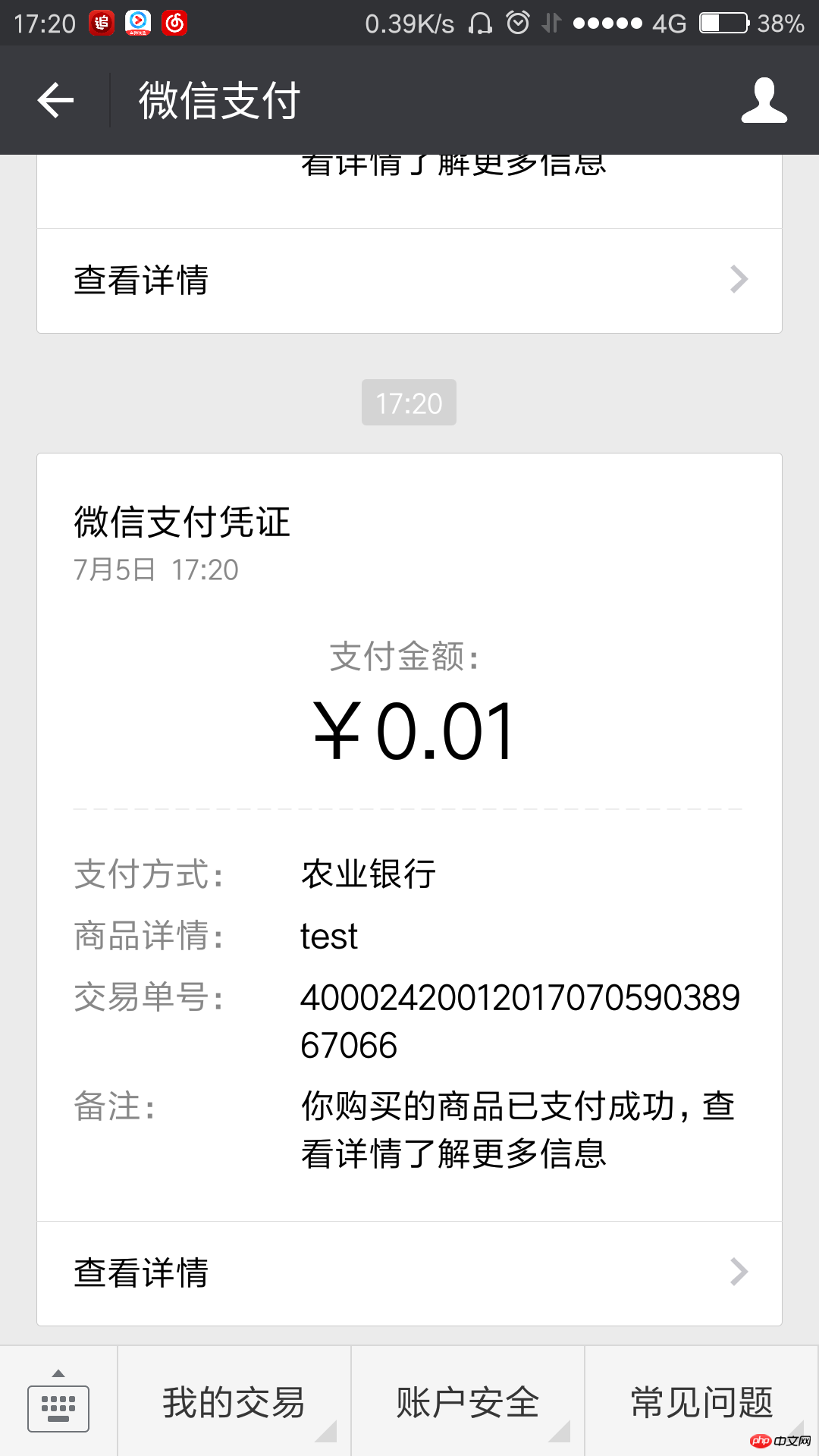
1) Parse the passed flow information and verify the information contained in the flow by re-signing Correctness. It is to determine whether this information is sent by WeChat
2) If return_code and result_code are both SUCCESS, handle the merchant's own business logic. It’s just the payment status of the order and some other information.
3) Tell WeChat that I have received your return value. No need to post again.
Without further ado, let’s just post the code!
public String return_data(HttpServletRequest request, HttpServletResponse response) throws Exception {
logger.info("微信支付请求回调了");
String resXml = "";
Map<String, String> backxml = new HashMap<String, String>();
InputStream inStream;try {
inStream = request.getInputStream();
ByteArrayOutputStream outSteam = new ByteArrayOutputStream();byte[] buffer = new byte[1024];int len = 0;while ((len = inStream.read(buffer)) != -1) {
outSteam.write(buffer, 0, len);
}
outSteam.close();
inStream.close();
String result = new String(outSteam.toByteArray(), "utf-8");// 获取微信调用我们notify_url的返回信息Map<String, String> map = WXPayUtil.xmlToMap(result);if (map.get("result_code").toString().equalsIgnoreCase("SUCCESS")) {if (WXPayUtil.isSignatureValid(map, PayConfigUtil.API_KEY)) {
logger.info("微信支付-签名验证成功");// backxml.put("return_code", "SUCCESS");// backxml.put("return_msg", "OK");// String toXml = WXPayUtil.mapToXml(backxml);// response.getWriter().write(toXml);resXml = "<xml>" + "<return_code><![CDATA[SUCCESS]]></return_code>"+ "<return_msg><![CDATA[OK]]></return_msg>" + "</xml> ";//业务处理开始 //业务处理结束 }
BufferedOutputStream out = new BufferedOutputStream(response.getOutputStream());out.write(resXml.getBytes());out.flush();out.close();
}
} catch (IOException e) {
e.printStackTrace();
}return resXml;
}##attach parameter? It is very convenient to bring business data here
#
The above is the detailed content of Detailed explanation of WeChat public account payment development (java) examples. For more information, please follow other related articles on the PHP Chinese website!

Hot AI Tools

Undresser.AI Undress
AI-powered app for creating realistic nude photos

AI Clothes Remover
Online AI tool for removing clothes from photos.

Undress AI Tool
Undress images for free

Clothoff.io
AI clothes remover

AI Hentai Generator
Generate AI Hentai for free.

Hot Article

Hot Tools

Notepad++7.3.1
Easy-to-use and free code editor

SublimeText3 Chinese version
Chinese version, very easy to use

Zend Studio 13.0.1
Powerful PHP integrated development environment

Dreamweaver CS6
Visual web development tools

SublimeText3 Mac version
God-level code editing software (SublimeText3)

Hot Topics
 1385
1385
 52
52
 Perfect Number in Java
Aug 30, 2024 pm 04:28 PM
Perfect Number in Java
Aug 30, 2024 pm 04:28 PM
Guide to Perfect Number in Java. Here we discuss the Definition, How to check Perfect number in Java?, examples with code implementation.
 Weka in Java
Aug 30, 2024 pm 04:28 PM
Weka in Java
Aug 30, 2024 pm 04:28 PM
Guide to Weka in Java. Here we discuss the Introduction, how to use weka java, the type of platform, and advantages with examples.
 Smith Number in Java
Aug 30, 2024 pm 04:28 PM
Smith Number in Java
Aug 30, 2024 pm 04:28 PM
Guide to Smith Number in Java. Here we discuss the Definition, How to check smith number in Java? example with code implementation.
 Java Spring Interview Questions
Aug 30, 2024 pm 04:29 PM
Java Spring Interview Questions
Aug 30, 2024 pm 04:29 PM
In this article, we have kept the most asked Java Spring Interview Questions with their detailed answers. So that you can crack the interview.
 Break or return from Java 8 stream forEach?
Feb 07, 2025 pm 12:09 PM
Break or return from Java 8 stream forEach?
Feb 07, 2025 pm 12:09 PM
Java 8 introduces the Stream API, providing a powerful and expressive way to process data collections. However, a common question when using Stream is: How to break or return from a forEach operation? Traditional loops allow for early interruption or return, but Stream's forEach method does not directly support this method. This article will explain the reasons and explore alternative methods for implementing premature termination in Stream processing systems. Further reading: Java Stream API improvements Understand Stream forEach The forEach method is a terminal operation that performs one operation on each element in the Stream. Its design intention is
 TimeStamp to Date in Java
Aug 30, 2024 pm 04:28 PM
TimeStamp to Date in Java
Aug 30, 2024 pm 04:28 PM
Guide to TimeStamp to Date in Java. Here we also discuss the introduction and how to convert timestamp to date in java along with examples.
 Java Program to Find the Volume of Capsule
Feb 07, 2025 am 11:37 AM
Java Program to Find the Volume of Capsule
Feb 07, 2025 am 11:37 AM
Capsules are three-dimensional geometric figures, composed of a cylinder and a hemisphere at both ends. The volume of the capsule can be calculated by adding the volume of the cylinder and the volume of the hemisphere at both ends. This tutorial will discuss how to calculate the volume of a given capsule in Java using different methods. Capsule volume formula The formula for capsule volume is as follows: Capsule volume = Cylindrical volume Volume Two hemisphere volume in, r: The radius of the hemisphere. h: The height of the cylinder (excluding the hemisphere). Example 1 enter Radius = 5 units Height = 10 units Output Volume = 1570.8 cubic units explain Calculate volume using formula: Volume = π × r2 × h (4
 How to Run Your First Spring Boot Application in Spring Tool Suite?
Feb 07, 2025 pm 12:11 PM
How to Run Your First Spring Boot Application in Spring Tool Suite?
Feb 07, 2025 pm 12:11 PM
Spring Boot simplifies the creation of robust, scalable, and production-ready Java applications, revolutionizing Java development. Its "convention over configuration" approach, inherent to the Spring ecosystem, minimizes manual setup, allo



